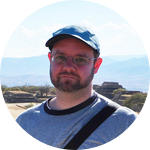About This Project
Billions of red blood cells (in green) form in our bone marrow everyday. The red blood cells cluster with macrophage (orange) to get rid of their nuclei. The macrophages then gooble up the nuclei (about 18 lbs of DNA in a lifetime!). We are exploring how these two cell types work together to keep us alive.Ask the Scientists
Join The DiscussionWhat is the context of this research?
The main research question here is; how do our developing red blood cells shrink their nuclei and then expel them in one go?
We think we've found a completely new mechanism that controls how the nuclei are popped out.
What is the significance of this project?
In the two seconds it'll take for you to read this sentence, you would have made 4 million new red blood cells.
Over 2 billion people have some kind of disease that affects their red blood cells such as malaria or anemia.
Our red blood cells, and those of all other mammals (platypus, kangaroos, dogs, pandas, slow lorises, gorillas) have one striking feature in common-a lack of a nucleus. Our red blood cells circulate, carry oxygen and carbon dioxide and keep us alive without having a nucleus. In contrast, fish, birds, frogs and reptiles all have red blood cells with nuclei.
So not having a nucleus in your red blood cell shows that you are a mammal.
In the bone marrow, where red blood cells are made, the nucleus becomes condensed and is then pushed out of the cell in one go. This is called enucleation. This process is essential for our red blood cells to form properly. If it doesn't happen, it's a really bad sign.
How enucleation takes place is very poorly understood. We want to work out how developing red blood cells interact with bigger cells called macrophages which gobble up the nuclei so we're not overflowing with free DNA.
Inspite of enucleation happening millions of times inside our bodies every day, we don't know what controls it. We know that having red blood cells in the blood stream is a sign of disease, or even a type of leukemia. Working out what regulates enucleation could help us develop new treatments for some forms of red blood cell disease.
What are the goals of the project?
The funds will be used to buy the antibodies, chemicals and reagents we need to complete our experimental study. Support for running the expensive electron microscope would really help the project push ahead.
We'd love have open access for all of our publications but only if we can afford the high publishing fees.
Budget
The budget will be used for chemicals and reagents for the experiments as well as open access publication fees. We also need some support to pay for the fees to use the electron microscope to give us the amazing images that help us understand the process we're investigating.
Meet the Team
Affiliates
Doctor of Philosophy, Department of Biochemistry, University of Hong Kong, 1998
Team Bio
I was born in hot, dry Perth on the western side of Australia and grew up in Melbourne in the southeast corner. Imagine Ramsey Street from "Neighbours". That's pretty much were I grew up (actually it was filmed about 5 mins bike ride from my home). It was in Melbourne that I went to high school and then studied Science at Monash University. At the tender age of 21 I packed my bags and left Australia to do a Ph.D in Hong Kong. After 5 great years in that wonderful city I moved to Kyoto, Japan to do a postdoc in Molecular Genetics. There my interest in blood cell production really picked up. My four years in a wonderful lab in the beautiful city of Kyoto was followed with a brief spell in Mainz, Germany, the home of the inventor of the printing press. Then, I was off to New York City where I was assistant professor in Hematology at Mount Sinai School of Medicine. Three years ago I headed back to Australia, to the beautiful city of Sydney where I started my lab and do lots of teaching.Stuart Fraser
I was born in hot, dry Perth on the western side of Australia and grew up in Melbourne in the southeast corner. Imagine Ramsey Street from "Neighbours". That's pretty much were I grew up (actually it was filmed about 5 mins bike ride from my home). It was in Melbourne that I went to high school and then studied Science at Monash University. At the tender age of 21 I packed my bags and left Australia to do a Ph.D in Hong Kong. After 5 great years in that wonderful city I moved to Kyoto, Japan to do a postdoc in Molecular Genetics. There my interest in blood cell production really picked up. My four years in a wonderful lab in the beautiful city of Kyoto was followed with a brief spell in Mainz, Germany, the home of the inventor of the printing press. Then, I was off to New York City where I was assistant professor in Hematology at Mount Sinai School of Medicine. Three years ago I headed back to Australia, to the beautiful city of Sydney where I started my lab and do lots of teaching.
Additional Information
The banner image shows a section through a mouse blood vessel. The small pink cells are red blood cells, or erythrocytes. You can see that there's no blue nucleus inside them. That's a characteristic that makes mammals special compared to all other animals. Why and how we get rid of the nucleus in our red blood cells is our focus.Project Backers
- 2Backers
- 2%Funded
- $140Total Donations
- $70.00Average Donation
